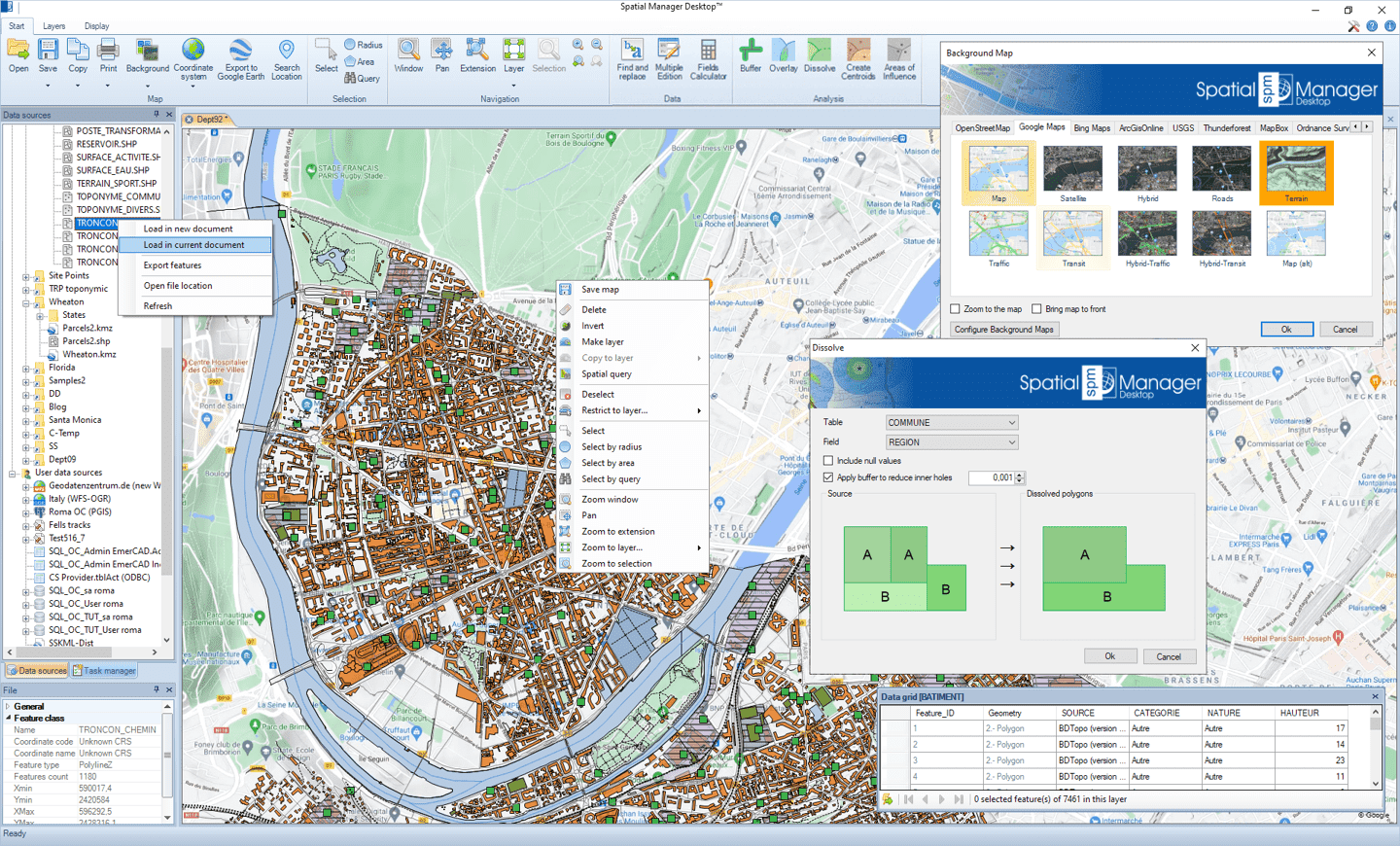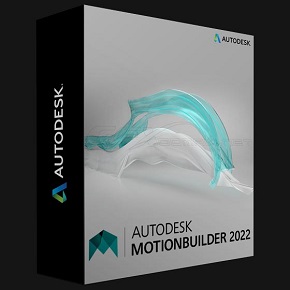Download Spatial Manager Desktop 8 full version program free setup for Windows. Spatial Manager Desktop is a comprehensive and reliable software solution that was developed to assist you in successfully managing spatial data necessary in planning, infrastructure or construction projects.
Spatial Manager Desktop Overview
Spatial Manager Desktop is a robust and user-friendly software application designed for geospatial data management and spatial analysis. Geared towards GIS (Geographic Information Systems) professionals, cartographers, and anyone working with spatial data, this tool simplifies the process of importing, exporting, and manipulating geographic information. One of the key features of Spatial Manager Desktop is its versatile data format compatibility. It supports a wide range of spatial data formats, including Shapefiles, KML, DWG, DXF, and various database formats. This allows users to seamlessly integrate data from different sources and formats into their GIS projects, eliminating the need for multiple conversion tools. The software’s intuitive interface makes it accessible to users of all skill levels. It offers a range of powerful data management and analysis tools, enabling users to edit, transform, and clean up their spatial data with ease. This includes operations like data joining, filtering, and spatial queries, which are essential for spatial analysis and decision-making. Spatial Manager Desktop also includes robust data import and export capabilities. Users can effortlessly import data from external sources, such as web services or databases, and export their GIS projects to various formats for sharing and collaboration. The software even supports exporting to Google Earth, allowing users to visualize their spatial data in a 3D environment. You may also like DP Animation Maker 3.5.22

Furthermore, the software includes advanced data transformation and geoprocessing features. Users can perform spatial operations like buffer analysis, map algebra, and coordinate transformations, making it a valuable tool for spatial modeling and data enrichment. The ability to automate these processes through batch processing further enhances productivity. In terms of cartography and visualization, Spatial Manager Desktop offers tools for creating high-quality maps and layouts. Users can customize symbology, labels, and layouts to create visually appealing and informative maps for presentations and reports. Overall, Spatial Manager Desktop streamlines the management and analysis of spatial data, offering compatibility with numerous data formats, user-friendly tools, and powerful geoprocessing capabilities. Whether you are a GIS professional or someone working with spatial data for the first time, this software provides the tools needed to efficiently handle geographic information and make informed decisions based on spatial analysis.

Features
- Data Import: Import spatial data from various sources, including files, databases, and web services.
- Data Export: Export GIS projects and data to a wide range of formats for sharing and collaboration.
- Data Format Compatibility: Support for various spatial data formats, such as Shapefiles, KML, DWG, DXF, and more.
- Data Cleaning: Tools for cleaning and enhancing spatial data, including data filtering and validation.
- Data Transformation: Perform data transformation and manipulation operations, such as data joining and spatial queries.
- Batch Processing: Automate repetitive tasks and processes through batch operations.
- Spatial Analysis: Conduct advanced spatial analysis, including buffer analysis, map algebra, and proximity analysis.
- Coordinate Transformations: Convert between different coordinate systems and projections effortlessly.
- Data Joining: Merge spatial data based on common attributes for analysis and visualization.
- Data Filtering: Apply filters to narrow down datasets and focus on specific features or attributes.
- Data Labeling: Customize labels for map features to enhance visualization and communication.
- Data Styling: Create custom symbology and styling for map features to meet specific visualization needs.
- Layout Design: Design and customize map layouts for presentations, reports, and printing.
- Web Map Services: Connect to web map services and incorporate external map data into your projects.
- Google Earth Integration: Export GIS data to Google Earth for 3D visualization and analysis.
- Data Validation: Validate spatial data to ensure accuracy and compliance with standards.
- Data Geocoding: Convert addresses into geographic coordinates for mapping and analysis.
- Data Clipping: Clip spatial data to a specified area of interest for focused analysis.
- Data Aggregation: Aggregate data to summarize and analyze information at different levels.
- Data Editing: Edit and update spatial data directly within the software for data maintenance.
- Data Querying: Perform spatial and attribute queries to extract specific information from datasets.
- Custom Coordinate Systems: Define and use custom coordinate systems and projections.
- Geospatial Metadata: Access and manage metadata associated with spatial datasets.
- Geoprocessing Toolbox: Access a toolbox of geoprocessing tools for advanced spatial analysis.
- Spatial Overlay: Overlay multiple spatial layers to analyze and visualize relationships.
- Data Classification: Apply classification methods to symbolize and visualize data.
- Data Validation: Validate and correct geometries to ensure data integrity.
- Raster Data Support: Work with raster data, including georeferencing and analysis.
- Database Integration: Connect to and manage spatial data within databases, including SQL support.
- Topology Checking: Perform topology checks to identify and fix data integrity issues.
- Georeferencing: Georeference scanned maps or images for spatial analysis.
- GPS Data Integration: Import and work with GPS data for location-based analysis.
- Heat Maps: Create heat maps to visualize data density and distribution.
- Metadata Export: Export metadata for documentation and sharing.
- Multiple Layouts: Create multiple layouts within a project for different map views.
- User-Friendly Interface: Intuitive and user-friendly interface for efficient workflows.
- GIS Documentation: Access documentation and resources for GIS best practices.
- Customization Options: Customize the software’s appearance and settings to suit your preferences.
- Technical Support: Access technical support and resources for assistance.
Technical Details
- Software Name: Spatial Manager Desktop for Windows
- Software File Name: Spatial-Manager-Desktop-8.6.1-Build-14511.rar
- Software Version: 8.6.1 Build 14511
- File Size: 249 MB
- Developers: spatialmanager
- File Password: 123
- Language: Multilingual
- Working Mode: Offline (You donÆt need an internet connection to use it after installing)
System Requirements
- Operating System: Win 7, 8, 10, 11
- Free Hard Disk Space:
- Installed Memory: 1 GB
- Processor: Intel Dual Core processor or later
- Minimum Screen Resolution: 800 x 600
What is the latest version of Spatial Manager Desktop?
The developers consistently update the project. You can view the most recent software update on their official website.
Is it worth it to install and use Software Spatial Manager Desktop?
Whether an app is worth using or not depends on several factors, such as its functionality, features, ease of use, reliability, and value for money.
To determine if an app is worth using, you should consider the following:
- Functionality and features: Does the app provide the features and functionality you need? Does it offer any additional features that you would find useful?
- Ease of use: Is the app user-friendly and easy to navigate? Can you easily find the features you need without getting lost in the interface?
- Reliability and performance: Does the app work reliably and consistently? Does it crash or freeze frequently? Does it run smoothly and efficiently?
- Reviews and ratings: Check out reviews and ratings from other users to see what their experiences have been like with the app.
Based on these factors, you can decide if an app is worth using or not. If the app meets your needs, is user-friendly, works reliably, and offers good value for money and time, then it may be worth using.
Is Spatial Manager Desktop Safe?
Spatial Manager Desktop is widely used on Windows operating systems. In terms of safety, it is generally considered to be a safe and reliable software program. However, it’s important to download it from a reputable source, such as the official website or a trusted download site, to ensure that you are getting a genuine version of the software. There have been instances where attackers have used fake or modified versions of software to distribute malware, so it’s essential to be vigilant and cautious when downloading and installing the software. Overall, this software can be considered a safe and useful tool as long as it is used responsibly and obtained from a reputable source.
How to install software from the WinRAR file?
To install an application that is in a WinRAR archive, follow these steps:
- Extract the contents of the WinRAR archive to a folder on your computer. To do this, right-click on the archive and select ”Extract Here” or ”Extract to [folder name]”.”
- Once the contents have been extracted, navigate to the folder where the files were extracted.
- Look for an executable file with a .exeextension. This file is typically the installer for the application.
- Double-click on the executable file to start the installation process. Follow the prompts to complete the installation.
- After the installation is complete, you can launch the application from the Start menu or by double-clicking on the desktop shortcut, if one was created during the installation.
If you encounter any issues during the installation process, such as missing files or compatibility issues, refer to the documentation or support resources for the application for assistance.
Can x86 run on x64?
Yes, x86 programs can run on an x64 system. Most modern x64 systems come with a feature called Windows-on-Windows 64-bit (WoW64), which allows 32-bit (x86) applications to run on 64-bit (x64) versions of Windows.
When you run an x86 program on an x64 system, WoW64 translates the program’s instructions into the appropriate format for the x64 system. This allows the x86 program to run without any issues on the x64 system.
However, it’s important to note that running x86 programs on an x64 system may not be as efficient as running native x64 programs. This is because WoW64 needs to do additional work to translate the program’s instructions, which can result in slower performance. Additionally, some x86 programs may not work properly on an x64 system due to compatibility issues.
What is the verdict?
This app is well-designed and easy to use, with a range of useful features. It performs well and is compatible with most devices. However, may be some room for improvement in terms of security and privacy. Overall, it’s a good choice for those looking for a reliable and functional app.
Download Spatial Manager Desktop 8 Latest Version Free
Click on the button given below to download Spatial Manager Desktop free setup. It is a complete offline setup for Windows and has excellent compatibility with x86 and x64 architectures.










